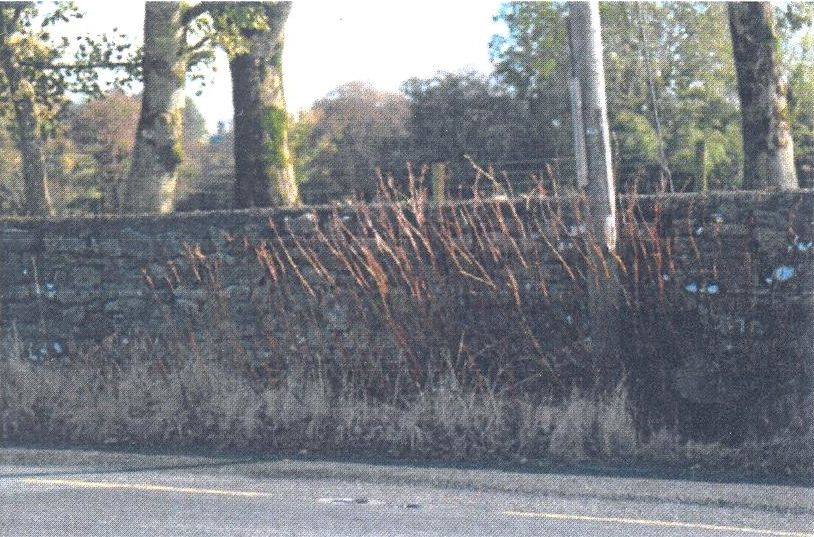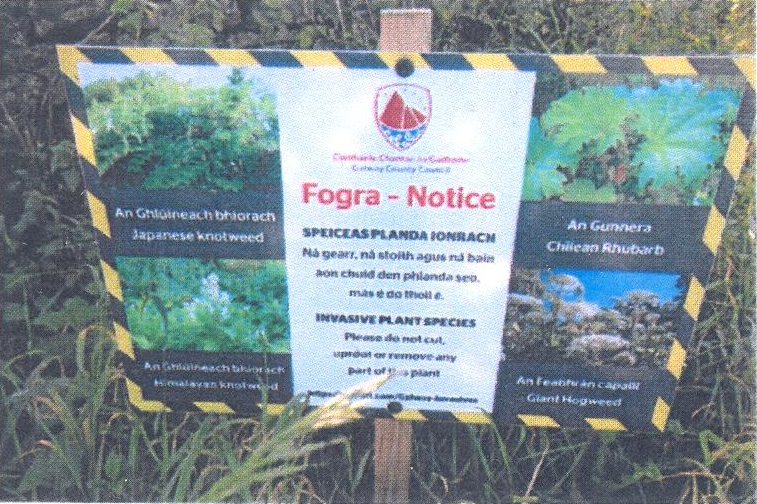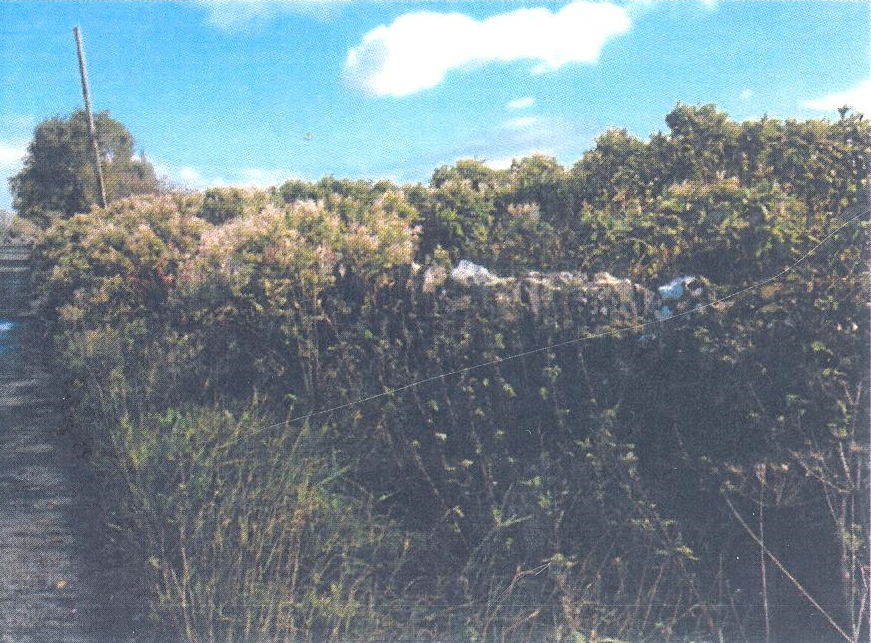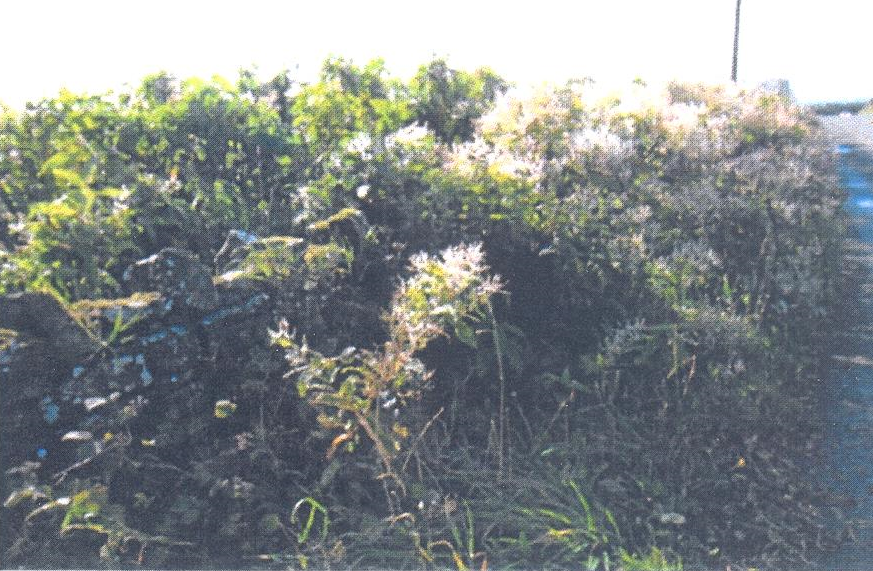|
Written by Paddy Keane, of Keane Auctioneers. Recently, when requested to give a short talk at any evening seminar, I decided to introduce some enthusiasm. I got the seminar host to distribute a number of photocopies of a plant. A small prize of €20 was offered for the plant identification. To our astonishment, it transpired that only one person of the group recognised it. Consequently, it is by way of this article that I decided the public should become aware of the presence of this plant and its future consequences. Japanese Knotweed, classified as a most invasive species, was first discovered in Wales in the 1880s. It was then introduced by the Victorians for horticultural purposes. Its ornamental leaves and clusters of white flowers together with its three metre bamboo-like stems made it an attractive option for many gardens of the era. Ironically, it only started to manifest itself in Ireland since the 1980s, likewise as an ornamental plant particularly on roadside areas of the Irish landscape. Describing Japanese Knotweed will depend very much on the time of year in question. In Spring, small red buds appear. In Summer and Autumn, clusters of white flowers grow. In winter, the plant dies, leaving dead brown cave like stems standing or lying down. Whilst underground, it bears a most extensive rhizome, which is essentially an underground stem system common with an orange centre that snaps easily like a carrot when bent. Best referred to as most destructive, which not only causes damage to plant biodiversity and agriculture, it is also causing major problems for buildings and flood defences. When cut or pulled, or even interfered with, Japanese Knotweed multiplies aggressively and srpeads rapidly, splitting concrete and damaging infrastructure such as homes and farm buildings. It can penetrate rapidly through both walls and tarmacadam. Consequently, it may well decrease the price of land and if identified near a planned building site, both Planning Permission and Mortgage Approval could be denied. In 2014, in the UK, the government spent in excessive of 1.25 BILLION sterling to eradicate the weed. Early identification is paramount, which was borne out by a Longford beef farmer who put a successful plan in place to eradicate it. In August 2017, Kerry County Council put aside €100,000 to destroy the invasive weed, which stymied construction of a Community Hospital in Kenmare. It’s important therefore to recognise it. Under article 49 and 50 of the Birds and Habitats Directive, it is an offence to plant or dispose of the weed within the state. If, for example, a farmer knowingly cuts the Knotweed, they are in serious breach of this directive and may be prosecuted. In addition, the following procedures should be adhered to if you recognise it on a farm: - fence it off, photograph it and forward it to your local authority. Never under any circumstances attempt to cut the weed, or you will cause it to spread. If walking in an area of the Knotweed, wash both your footwear and clothes as you can cause it to spread. A lose 2cm fragment can cause it to spread. Refrain from digging it at all costs. Although prevalent in every county, I have observed serious infestations in roadside areas of Aughrim, Kilrickle, Bullaun and Cappataggle. Most recently, Galway County Council have placed warning notices in many of those areas so as to alert people of its existence. From a farming point of view, farmers need to take evasive action to prevent spread of the weed or may well risk breaching cross compliance rules which ultimate would affect all farm payments. A similar invasive plant known as Giant Hogweed, prevalent in certain parts out the country, causes a variety of most serious skin irritations if contact is made. On a final note, leaving aside invasive plants, people need to be aware of an invasion to Ireland of a species known as “False Widow Spiders”. Whilst unlikely that their bite is fatal, they should be considered as a serious potential health risk. If you have a story worth sharing or news about Ballinasloe, please email [email protected]
0 Comments
Leave a Reply. |
CLICK HERE to read the Latest Ballinasloe News Articles
June 2024
|
The Town Team was set up by BACD Ltd. to revive the fortunes of Ballinasloe and its hinterland. With the main focus to build on the town’s many strengths, change existing negative perceptions and bring about measurable improvements in the town centre economy and its wider social value.
|
Ballinasloe Area Community Development Ltd.
Ballinasloe Enterprise Centre Creagh Ballinasloe Co. Galway |
All generic photos and images have been sourced and are free of copyright or are clip art images free of copyright. Photos of Ballinasloe have been donated by BEC. If you have any photos that you would like included on the website please email us
Copyright © All rights reserved, 2024 BACD






 RSS Feed
RSS Feed
